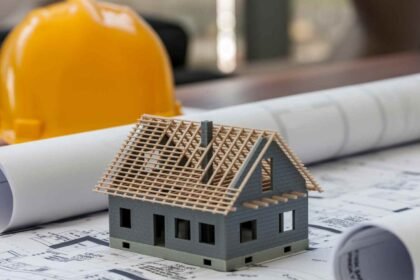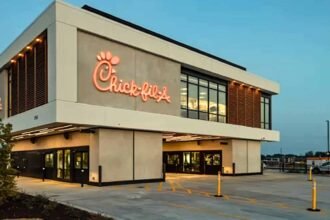Builders across the United States construct smaller homes to tackle soaring prices, while investors spot fresh chances in this evolving landscape. As of 2025, the housing market grapples with a stark reality: homes shrink in size even as costs climb, reshaping how Americans live and invest. This shift stems from years of economic pressures, including inflation and high mortgage rates, but it also opens doors for savvy opportunities. Experts predict modest price growth of 2-4% this year, driven by limited supply and steady demand. Yet, beneath these numbers lies a deeper transformation that affects buyers, sellers, and investors alike.
The Trend of Shrinking Home Sizes
Homebuilders respond to affordability challenges by designing compact living spaces. The average U.S. home size now stands at 1,800 square feet, marking a 6% drop since 2016. New single-family homes have shrunk by 11% over the past decade, with the median size hitting 2,150 square feet in 2024. This downsizing isn’t just a fad; it’s a necessity. Builders strip away extras like bonus rooms and oversized garages to keep prices in check. In 2023, the median square footage for new homes fell to 2,177 from a peak of 2,466 in 2015, according to Census data.
Buyers embrace this change, too. First-time homeowners and young families prioritize efficiency over sprawl. Tiny homes, once niche, now surge in popularity, offering footprints under 500 square feet at costs far below traditional builds. Developers note that 26% of them plan even smaller homes in 2025 to meet demand. This trend reflects broader societal shifts, like remote work blurring home-office lines and empty-nesters downsizing for simpler lives. Yet, smaller doesn’t always mean cheaper per square foot—rising material costs ensure that.
Escalating Costs in Construction and Buying
Inflation and supply chain woes push building expenses higher, making homes pricier despite their reduced size. The price per square foot for new homes has jumped 74% in the last decade. Median home values hover around $369,000 nationally, up 0.5% from last year, while some sources peg it at $443,141 with a 1.1% annual rise. Mortgage rates linger at 6.7%, locking many potential sellers in place and stifling inventory.
Labor shortages compound the issue. Construction workers demand higher wages amid a tight job market, and materials like lumber fluctuate wildly. Home sales dip—existing homes sold at a rate of 3.93 million annually in June, flat year-over-year—but prices hold firm due to low supply. Affordability hits hard: The median monthly cost of owning a home nears $4,000, compared to $2,296 for renting. Climate risks add another layer, with hazard insurance premiums soaring in vulnerable areas, potentially wiping out $1.47 trillion in home values over 30 years.
This cost surge forces tough choices. Families delay purchases, opting for rentals or multigenerational living. Builders offer incentives, like price cuts on 38% of new homes, the highest since 2022. Still, the market freezes for many, with demand at rock-bottom levels.
Impact on Buyers and the Broader Market
High costs and smaller sizes challenge buyers, but they also signal a market in flux. First-time buyers face steep barriers, with down payments and rates eroding purchasing power. Yet, inventory crept up—2.12 million homes for sale in July, a 12% increase year-over-year—giving shoppers more options. Sales remain sluggish, down 1.6% annually, as buyers wait for rate relief.
Regional differences emerge. Southern and Western metros see price drops in seven major cities, while the Northeast holds steady. New construction floods the market at 481,000 units, the highest since 2007, easing some pressure. Foreclosures rise slightly, up 7% in the first half of 2025, but strong equity prevents a crisis like 2008.
For sellers, the lock-in effect persists: Over 80% of mortgaged homeowners enjoy rates below 6%, deterring moves. This scarcity props up prices, but experts forecast flatter growth through 2030.
Investment Opportunities in a Changing Landscape
Investors seize the moment amid these shifts, turning challenges into profits. Smaller homes and modular builds cut costs and speed delivery—prefabrication features in 14% of multifamily projects, slashing delays by 30-50%. Accessory dwelling units (ADUs) and tiny homes appeal to renters, yielding strong cash flows in affordable markets.
Undervalued cities like Buffalo and Pittsburgh offer entry points, with median prices at $238,695 and $220,000, boasting low price-to-income ratios. Markets with high adjustable-rate mortgage exposure present deals as owners sell under pressure. Multifamily rentals thrive as buying remains out of reach, with rents stable and supply growing.
Federal programs, like HUD’s Housing Trust Fund, support affordable developments, though inflation strains budgets. Zoning reforms unlock land for denser builds, boosting returns. Investors eye sustainable features, as green homes command premiums amid climate concerns.
Looking Ahead: A Balanced Future?
The U.S. housing market adapts to smaller footprints and higher costs, fostering innovation and resilience. While buyers navigate affordability hurdles, investors find fertile ground in efficient designs and emerging markets. Prices may rise 3% in 2025, but slower growth hints at stability. This structural shift isn’t a crisis—it’s an evolution, inviting all to rethink what home means in America.









